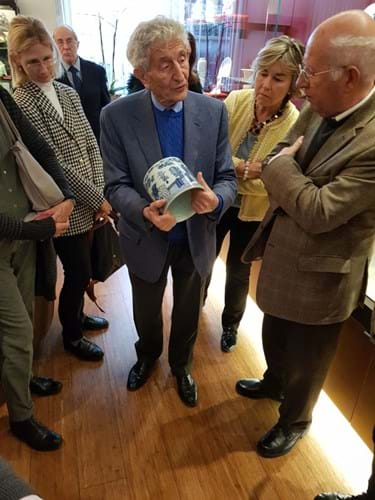
The family business has been open since 1925, launched by Richard’s father, Samuel Sydney Marchant (1897-1975). It has held its three-floor space on Kensington Church Street since 1953 and, so far, four generations of the family have worked in the gallery.
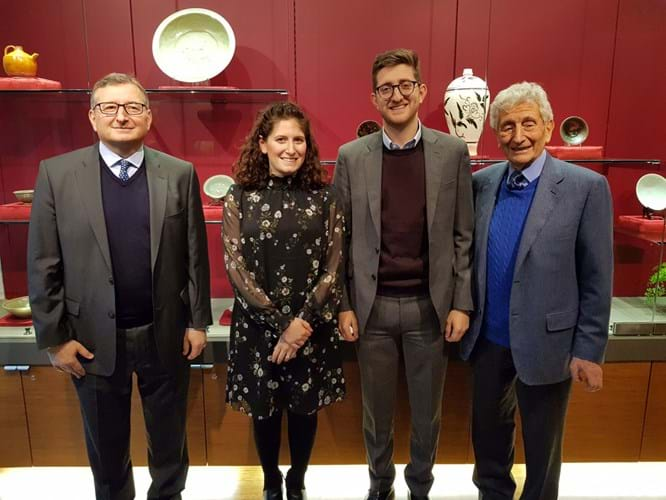
In the early days, Marchant specialised in a range of fields. Richard recalls seeing English watercolours, Japanese woodblock prints, netsuke and all English factories of porcelain. For many years, however, it has focused on Chinese porcelain. The current exhibition, Chinese Ceramics: Han to Song, opened on October 5.
Last week, Richard, former BADA chairman, received BADA’s Distinguished Service Award “for his enormous contributions to the association”.

In his tour around the gallery, he focused on pieces in the show as well as other items of stock, dispensing words of wisdom to visitors, who included members of the trade and those with no prior knowledge of Chinese ceramics.
1. A silver shine on some glazed pottery is the result of chemistry in action
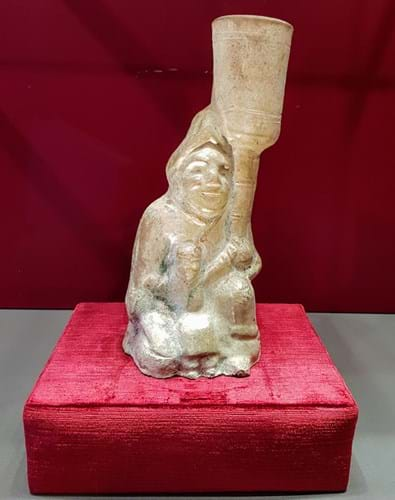
Part of the current exhibition, this green-glazed pottery model of a kneeling Middle Eastern figure with left knee raised has a distinctive iridescence, particularly when seen in person. The Eastern Han Dynasty (1st-2nd century AD) figure was excavated from a tomb and like many similar pieces has its iridescence as a result of oxidation on the glaze. The underside reveals its terracotta red body. It would have been used as an oil lamp and a similar example can be found in the British Museum.
2. At Marchant you can find a brush pot once owned by Marcel Proust
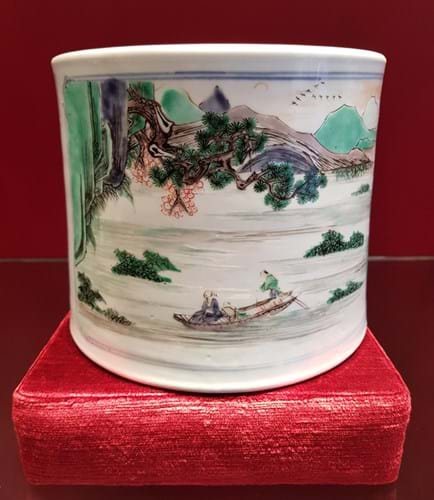
This famille verte Kangxi brushpot, 1712, painted with a scholar in a fishing boat, was made for the Chinese market. It was formerly in the collection of the French novelist and critic Marcel Proust (1871-1922), best known for his monumental novel À la Recherche du Temps Perdu, and was passed down by descent to his nephew. To the back is a 56-character poem in dedication to the Red Cliff, written by Su Shi in 1082. In part it reads: Now I compose this poem against the silence of the mountains, while a single crane flies above the small boat across the river. The vase is signed by Xiuyuan.
3. Consider the bottom of a piece or vessel before buying
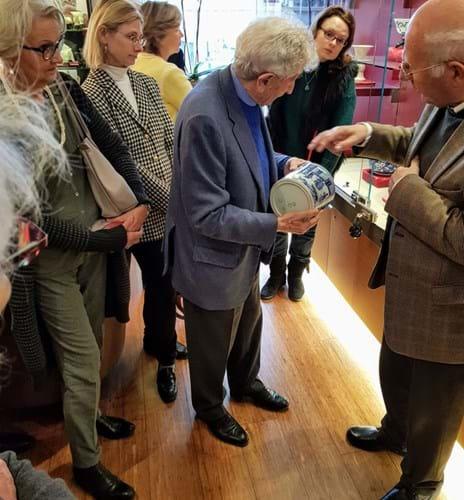
This is where all-important marks can be found, offering clues to the age and destination of particular pieces. This early Kangxi, c.1670, blue and white cylindrical brushpot, or bitong, has another secret to the bottom: an unglazed channel foot, often an indication of high-quality pieces. During the event, Richard also addressed the wooden stands that pots are often displayed on. These were not necessarily the choice of the makers. Most are later additions, and some are modern. However, they can set off such pieces to great effect.
4. These days, the top Chinese buyers are buying imperial ware
That is, pieces made specifically for the emperor, especially those pieces in perfect condition. Other sorts of works, such as Chinese export ware, which was made for western markets, continues to be more attracted to non-Chinese audiences.
5. There is even more than porcelain at Marchant
As well as Tang and Liao, famille verte, Ming and many other types of Chinese porcelain, the gallery offers cloisonné, bronzes and works of art. Also keep an eye out for furniture and paintings. For example, there is currently a complete set of paintings, each showing one of the Chinese treaty ports on show on the gallery’s floor level. There is also an assortment of jade pieces and hardstone. As a rule of thumb, jade pieces tend to be more valuable the lighter in colour they are, but in some cases, artists have used natural colour variations to enhance their work.






